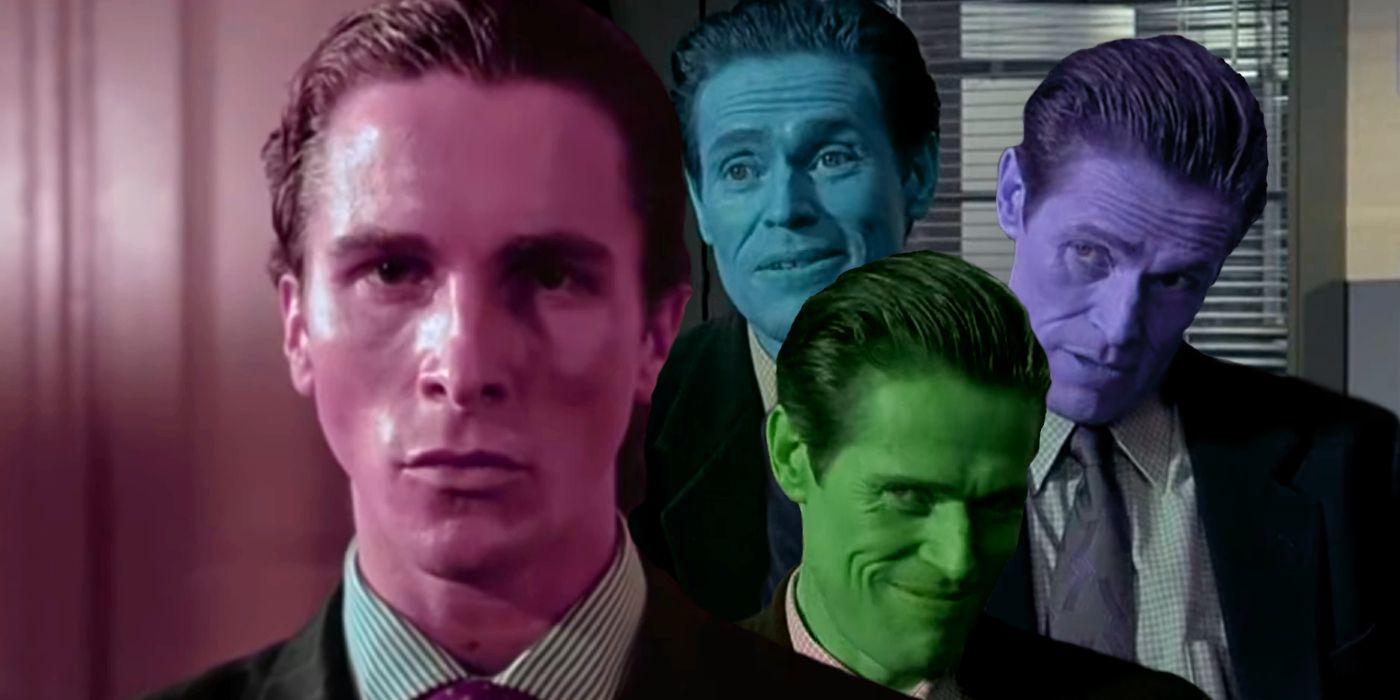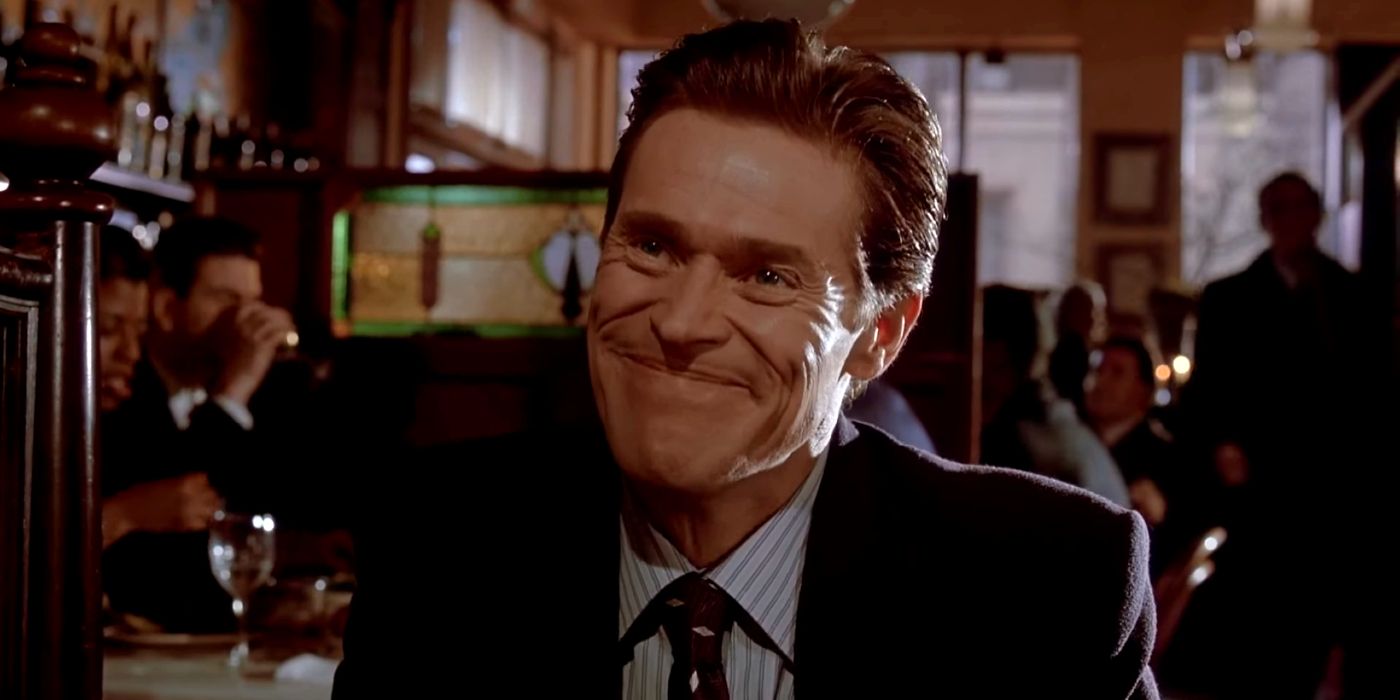
Willem Dafoe’s American Psycho scenes with Christian Bale’s Patrick Bateman are extremely unsettling, and it’s because of an amazing filmmaking decision. American Psycho released in 2000 as a film adaptation of Bret Easton Ellis’ 1991 novel of the same name. While the film adaptation, directed and co-written by Mary Harron, was relatively well-received at the time, there’s a strong case to be made that American Psycho is better in 2022, thanks to the movie’s still-relevant themes (and memes).
Another aspect of American Psycho that still holds up is Willem Dafoe as Donald Kimball, a private investigator looking into the disappearance of Patrick Bateman’s co-worker, Paul Allen (Jared Leto). Kimball asks Bateman a series of questions that shift wildly between innocuous and accusatory in two sweat-inducing scenes. It’s impossible to pinpoint Kimball’s motives, what he suspects, or what he knows. The confusing, unsettling, and unpredictable nature of the American Psycho scenes between Patrick Bateman and Donald Kimball are some of the movie’s most memorable and tense moments.
The unsettling nature of Willem Dafoe’s American Psycho scenes stems from an editing trick utilized by writer-director Mary Harron. However, Dafoe’s scenes serve a greater purpose than just being textbook demonstrations of amazing filmmaking. Donald Kimball is essential to the climax leading to American Psycho‘s ending, and his interactions with Patrick Bateman also reinforce American Psycho‘s ambiguous nature.
American Psycho Used A Clever Editing Trick For Willem Dafoe’s Scenes

For each of Willem Dafoe’s scenes in American Psycho, Mary Harron filmed three takes: one where Donald Kimball doesn’t suspect Patrick Bateman at all, one where he is suspicious, and one where he knows Patrick Bateman killed Paul Allen. The takes were then spliced together to create the impressive, unsettling final results. Donald Kimball’s interactions with Patrick Bateman fuel Bateman’s paranoia and self-doubt even further as he, much like the audience, becomes increasingly bewildered by Kimball’s contradictory behavior. That eventually leads to Bateman’s complete breakdown and a murderous rampage, although it’s left ambiguous whether Patrick Bateman’s murders really happened.
During an iconic scene detailing Patrick Bateman’s morning routine, he ominously observes that he “is simply not there,” and the symbolism holds true for much of American Psycho. The satirical horror movie is known for its perplexing ambiguity to the extent that several plot holes and inconsistencies are deliberate storytelling choices reflective of Bateman’s status as an unreliable narrator. His interactions with Donald Kimball are notable for portraying Bateman’s perception of reality, in real-time, during pivotal moments where he isn’t fully grounded in reality or fantasy; he is walking a fragile tightrope, tenuously tethered between them.
The true meaning of American Psycho remains open to interpretation. Patrick Bateman’s sweaty confession being casually brushed off as a social faux pas, combined with Paul Allen’s clean apartment at the end of the movie, could be a pointed commentary on the willingness of certain socioeconomic communities, like Wall Street, to overlook heinous offenses, in the interest of self-preservation, and maintaining a certain status quo. Whatever the case may be, Willem Dafoe’s unsettling American Psycho scenes are amazing for not just their technical achievements but also for what they contribute to the movie’s story and deeper meaning.




